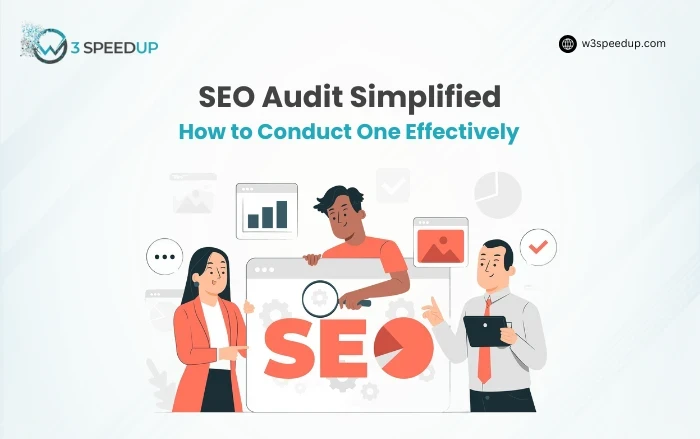An SEO audit is a crucial component in making sure your website is performing as expected. A complete audit reveals strengths, weaknesses, and opportunities, whether it’s boosting organic traffic, search engine rankings, or user experience. It takes an organized approach to look into a website’s technical structure and content strategy as part of an SEO audit. In this essay, we’ll look into what factors you should consider and what it takes to do thorough SEO research. Keep reading!
Steps to Conduct an Effective SEO Audit for Your Website
1. What Is Its Purpose?
Before you start looking into details, it’s important to first learn the basics and why the SEO audit is such an important thing. Websites function in the dynamic digital environment, and there is a continuous evolution of search engine algorithms. The SEO audit helps you assess how well your website has adapted to these changes, which ensures that it stays relevant and competitive. The audit creates a path for your improvement by finding technical problems, content gaps, and optimization possibilities. This transparency allows the alignment of website performance with overarching company goals.
2. Foundation of SEO Strategy
The foundation of every SEO strategy is the website’s technical health. This requires checking things such as how fast the site loads, how well it responds on mobile devices, and whether or not secure protocols like HTTPS are correctly implemented. Issues like broken links, duplicate material, and crawl mistakes can be identified by using specialized tools to scan the site. If you make sure these issues are resolved, search engines will have an easier time accessing the site, which is a good starting point for optimization.
3. Content Strategy
If you want to get successful SEO, content is still the number one priority. The website’s published content must be evaluated by audit to determine its performance, relevance, and quality. It’s important to check if articles correctly answer users’ questions or if the keywords are adequately targeted and distributed. Make sure to identify thin, outdated, or irrelevant content if you want to maintain its authority. For example, if readers want to learn about full website screenshots, then the offered insights should be straightforward and practical. You can enhance both credibility and engagement when you address these content gaps and ensure uniqueness.
4. On-Page Factors
On-page SEO is based on optimizing specific pages to enhance rankings and attract visitors. Analyzing meta descriptions, headers, and title tags are all included in this process. Search engines rely on each of these factors to determine how relevant the content is. Also, in many cases, the structure of URLs, keyword usage, and internal linking patterns are examined. Consistency and relevance in this field will greatly enhance SEO performance and improve user experience.
5. Backlink Profile
It’s very important to check the variety and quality of the website’s backlink profile during an audit. High-quality links from reputable websites can contribute to higher rankings, while, on the other hand, spammy or harmful links can give a hit to a site’s reputation. This is why you should concentrate on establishing genuine partnerships with trustworthy websites and staying away from suspect ones. Websites with strong backlink profiles are labeled as trustworthy sources of information in search engines.
6. User Experience
SEO success is becoming more and more dependent on user experience (UX). Websites that have helpful information and easy navigation are usually ranked higher in search engine results. During the audit, make sure that factors such as mobile usability, website load speed, and ease of navigation are all in the right place since they are the most important factors. No matter how high your website is ranked in search results, it’s almost a rule that you’ll lose visitors if they find the site’s design poor or if they have to wait a long time for it to load. Improving UX is not only going to bring a better SEO outcome but also user satisfaction and conversions.
7. Analytics and Tracking
An inevitable part of an SEO audit is an in-depth analysis of analytics. Google Search Console and Google Analytics can provide you with priceless information on site performance, including user behavior, bounce rates, and traffic trends. Keeping tabs on this data reveals trends and problematic areas. The collected data can successfully motivate future improvements if you set up proper goals.
Any website that wants to achieve its maximum potential knows the importance of an SEO audit. Every aspect of it, from analyzing technical foundations to refining content strategy, contributes to the ultimate goal of improving functionality and appearance. In the end, a well-executed SEO audit requires a continuous dedication to being flexible in a digital world, rather than a one-time task.
 Christmas Mega Sale – Enjoy Up to 50% OFF on Every Plan!
Christmas Mega Sale – Enjoy Up to 50% OFF on Every Plan! 



